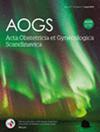A comparative study on infant growth between assisted reproductive technology pregnancy and natural pregnancy
Abstract
Introduction
Globally, the number of assisted reproductive technology (ART) infants has surpassed 10 million, with its utilization steadily increasing. Numerous studies have shown that ART pregnancies are more prone to adverse pregnancy outcomes. ART infants are at a higher risk for adverse birth outcomes. However, the differences in growth between ART and natural pregnancy (NP) infants remain controversial. This study aims to explore differences in pregnancy outcomes, birth outcomes, and growth rates between ART and NP infants during the first year of life, and to analyze the association between ART and rapid growth.
Material and Methods
Birth records of the Nantong area, China, from January 2020 to June 2021 were extracted. A total of 29 886 pregnant women and 30 051 infants were included in the characteristic analysis. Based on the use of ART recorded in the database, the pregnant women and infants were categorized into ART and NP groups, with the NP serving as the control group. For the growth analysis, 29 447 singleton infants were included. Growth within 12 months was examined using the LMS method. The association between reproductive methods, perinatal sociodemographic characteristics, infant birth characteristics, and rapid growth was analyzed using GEE model. To further explore the association between ART and rapid growth, we performed subgroup analyses based on infants' sex, birth weight, and perinatal residence, which were statistically associated with rapid growth in the multivariate GEE model.
Results
ART infants had higher rates of preterm birth (7.4% vs. 4.8%) and cesarean section (57.7% vs. 49.1%; p < 0.001 for both). Growth analysis displayed faster overall growth rates and higher rapid growth incidence in ART singleton infants. Multivariate GEE analysis showed that ART was associated with a higher incidence of rapid growth in both length (OR = 1.415, 95% CI: 1.316–1.521) and weight (OR = 1.236, 95% CI: 1.134–1.348).
Conclusions
ART singleton infants demonstrated a greater likelihood of experiencing rapid growth, despite being at higher risk of SGA, and achieved growth trajectories comparable to NP singleton infants. The findings suggest that ART may not influence postnatal growth. These results underscore the importance of tailored clinical monitoring and interventions for ART infants to ensure optimal growth and long-term health.




 求助内容:
求助内容: 应助结果提醒方式:
应助结果提醒方式:


